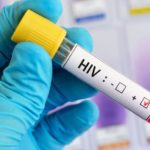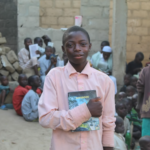SARS-CoV 2, also known as the COVID-19 which started as an outbreak in Wuhan, China in 2019, spread rapidly and made its first documented entry into Nigeria in February 2020.
The government responded in diverse ways to promptly curb the spread of which curfews and restrictions of movements were major activities put in place by the government. This restriction alongside others made movement for HIV-positive clients very difficult. Hence, the clients could not readily access treatment, care as well as viral load collection as effectively as possible.
In response to the challenge posed by the lockdown, the laboratory team birthed a more effective strategy to take viral load collection right to the Client’s doorstep. Community collection of Viral load sample collection, though already an existing strategy implemented by the Cross River State lab team on a small scale, was further scaled up given rise to the intense commencement of the viral load collection in the areas considered as ‘Hinterland’; places inaccessible with usual road transport, and this approach brought about an upsurge in the viral load collection.
In the Hinterland Viral Load collection, under permission from the Cross River State FHI 360 Office with proper guidance from the local chiefs and community leaders, the Medical Laboratory Scientists in the state was accompanied by case managers living in the communities and youths from the community to travel into the hinterland areas to collect samples from clients who live in such areas and are eligible for viral load services.


As seen in the graphs above, the collection of viral load samples in the community witnessed a tremendous rise in numbers from the month of March through July 2020. However, the facility collection only managed to thrive due to restrictions in movement and gathering.
It was a story to tell when the number of samples collected matched the number of eligible PLHIV for the Viral Load test. From August 2020 till April 2021, Viral load collection in Cross River State has been outstanding as the Viral Load coverage reached an all-time high of 96%.
Indeed, for this “Great Feet”, the Laboratory team has bagged this credit and looks forward to doing more for subsequent funded projects.
HOW 95% VIRAL LOAD COVERAGE WAS ACHIEVED IN AKAMKPA 1 AREA.
BACKGROUND:
General Hospital (GH) Akamkpa is a Global Fund site recently transited to Fhi36O CRSO. It has a total number of four hundred and fifty-five (455) clients on ART. Out of this number, 303 are females >15 and 15 are <15, 138 males >15 years, 15 males <15 years.
PHC Mma Effa is a SIDHAS supported site in Akamkpa that has been supported by fhi36O CRSO during Pre-Surge and after Surge. It has on treatment currently a total of 1015 clients (700 females, and 600 males) to include both pediatrics, adolescents, adults and pregnant mothers.
In the second quarter of FY21 (April to May 2021), a total of 175 clients were eligible for Viral Load (VL) in PHC Mma Effa and 202 in GH Akamkpa. A target of 20 VL per day was set by the organization of which we fell short some days and we as well over met target most days. It is pertinent to state here that we were able to meet our target for the period under review.
PERFORMANCE:
Data available showed in PHC Mma Effa and GH Akamkpa, 175 and 202 clients were eligible for VL and samples were all collected from the clients, in both facilities respectively. Results also showed that out of the total number of VL collected and results received for both facilities, 670 were suppressed (400 from Mma Effa and 270 from GHA), 50 were unsuppressed (18 from Mma Effa and 32 from GHA), 60 with pending result (40 from Mma Effa and 20 from GHA), and the unsuppressed 50 were all placed on EAC from both facilities. As at the period under review, out of the 50 placed on EAC, 37 have completed their EAC and are virally suppressed while the remaining 13 are yet to complete their EAC.
However, this feat wouldn’t have been achieved without the input of all stakeholders in both facilities especially the Case Managers and the CAM Team whose untiring efforts and resilience led to the achievement of this target.



